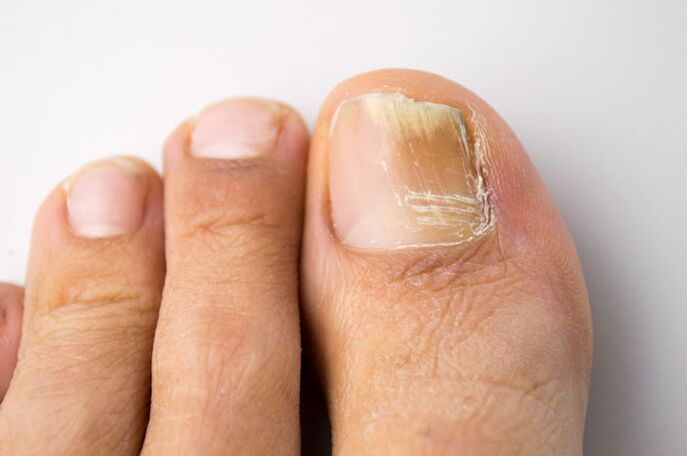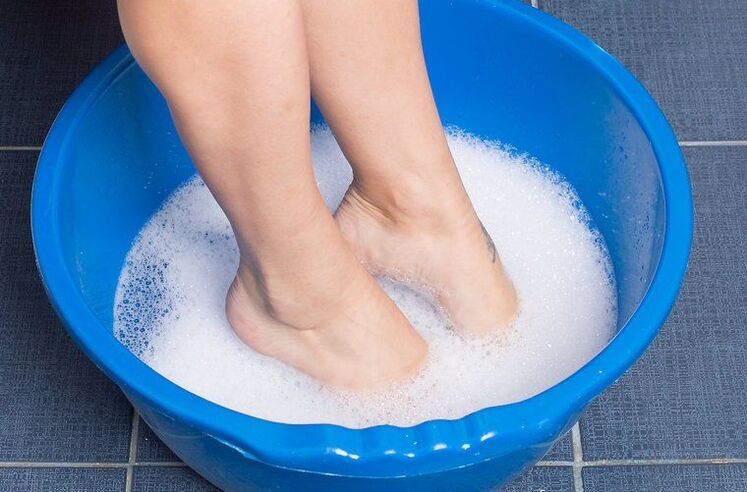When you have a fungal nail infection, or nail fungus, you should contact your dermatologist or mycologist. The first doctor to specialize in any skin problem. In its capacity are allergic, bacterial, viral and fungal lesions of the epidermis. A mycologist is a narrowly qualified specialist. He understands all types of fungi, treats mycotic lesions in any locale, conducts research and collects statistical information.
When you need medical help
A person gets a fungal infection when the spores of the fungus get on their skin or nails. You can "catch" disease-causing microorganisms in public places (sauna, swimming pools, beauty salons), from members of your household, in the shoe store. Mushrooms love moist and warm environments. They can breed in shoes. This most often happens if a person suffers from sweaty feet, ignoring this fact or ignoring the rules of personal hygiene.

When exposed to the fungus, a person does not always become infected. This is heralded by a decline in immunity. Normally, the body successfully copes with the onslaught of billions of bacteria every day. If the defenses are exhausted, you could be in trouble.
Nail fungus is a serious infectious disease. With it, a person is exposed to the pathogenic fungus for a long time. Mycotoxins with toxic properties enter his body. It also negatively affects the immune system. Get rid of nail fungus as soon as possible. The longer a person lives with an infection, the more difficult and longer it will be to treat. Onychomycosis begins is very difficult to cure, becomes chronic, relapsing, requires lifelong prophylactic medication.
A doctor should be contacted at the first signs of toenail fungus, namely:
- if they are covered with small spots, dots, stripes, pale impurities;
- if the color of the nail has changed - it becomes yellow, brown, gray or green;
- if the plaque grows inward, improper nail trimming creates an "entrance" for infection;
- if the nail peels off - a sign of the progression of onychomycosis;
- if a person has ringworm - the fungus spreads easily from the skin to the nails;
- if someone in the family has nail fungus;
- if the nail loses its shine, becomes dull, uneven.

The immediate reason to see a doctor is itchy, sweaty, dry skin on the feet. Excessive sweating and unpleasant foot odor could be signs of a growing fungus.
Who goes first?
After deciding to see a doctor, you should first make an appointment with a dermatologist. Skin specialists are available at all free and paid hospitals. Feel free to schedule an appointment with a dermatologist at your local skin care center.
The dermatologist will conduct a visual examination - identify signs of fungal growth, examine the skin for other symptoms of muscle damage in the body. As a rule, the doctor prescribes tests (scraping from the nails or skin) to confirm or refute mycosis.
If the specialist's suspicions are confirmed, additional tests may be ordered - a general and biochemical study of blood, urine and liver tests. Additional information is needed to determine the cause of the infection, to detect all possible comorbidities. Blood and liver diseases impose restrictions on the use of certain medications.
Referrals for consultation with a mycologist are issued in severe cases - if all toenails have been damaged by onychomycosis, nail disintegration (destruction of nail plates) has begun, Some nails were missing, the patient had previously tried unsuccessfully to self-medicate. medicine. The foreskin specialist will order additional tests to determine the type of pathogen. Specific drugs are more effective against a particular fungus.
General principles to get rid of nail fungus
To treat onychomycosis, specialists prescribe several drugs at once. Among them:
- systemic antifungal agents;
- topical dosage forms;
- vitamin preparations;
- immune stimulants.
The physician makes an individual assessment of the patient's lifestyle and hygiene culture. If necessary, he makes appropriate recommendations necessary to reduce the duration of treatment.
Medical treatment should be done very carefully. The patient must take the medicine on time, exactly follow the treatment conditions recommended by the doctor. Topical remedies are used until the problem is completely eliminated. As a rule, use is continued for 1-2 months after the symptoms of onychomycosis disappear. The following substances are prescribed as topical preparations:
- varnishes;
- lubricating gel;
- ointment;
- solutions.

As auxiliary methods, saline baths are recommended, the removal of plaques with the help of special emollient ointments, sometimes surgical assistance is required.
The immunostimulants and vitamins were selected in accordance with the results of biochemical analysis. In some cases, nail fungus is the first sign of serious diseases of the internal organs or hematopoietic system.
Do not immediately throw away the doctor's phone number after the first consultation. The success of nail fungus therapy depends on controlling the healing process. The doctor's consultation and tests will be repeated several times throughout the course of treatment (up to 1 year). They will have to be reapplied as soon as the changed nail grows back, one month after full recovery. In order not to complicate the treatment process, the patient should refuse to apply decorative polish, extend the nails.



























